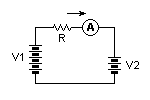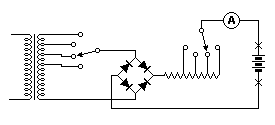Embedded_Geek
Full Member level 6
Once I went to a mechanic to get my bike's battery recharged. I saw him increasing the current using a knob. But the voltage was constant. My question is how come the current is increased with a constant load. As per my knowledge the amount of cuurent drawn depends on the load. Can anyone clear my doubt please. I have googled it alot but unfortunately did not find any helpful information.
Thanks in advance,
Ajish
Thanks in advance,
Ajish

